School for Nurses
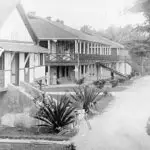
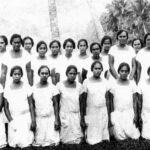
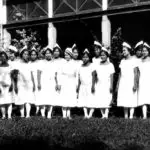
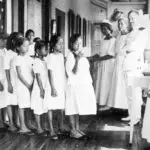
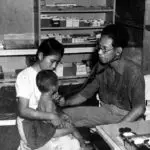
Table of Contents
Share This
Lack of Navy medical personnel
Because of a shortage of personnel Navy Medical Officers began teaching local women to be health care workers. The first class offered, in 1901, was in midwifery (local women delivered 325 babies that year) beginning a long tradition of the staff of the Naval Hospital teaching local people to be health care providers using Western medical practices.
In June 1901, the cornerstone for the Maria Schroeder Hospital in Hagåtña was laid. The hospital was named after the wife of Naval governor Captain Seaton Schroeder. Maria Schroeder organized the collection of money to build a hospital to service military personnel and the local community.
In 1905, eight Chamorro women worked as nursing students at the Susana Hospital. They were taught about infectious diseases, physiology, and the use of drugs, by Navy medical doctors. In this year, all the people in Guam were vaccinated. In addition, a graduate nurse from Philadelphia, who was married to a medical doctor, volunteered twice a week at the hospital to teach hygiene and patient care. Students continued to work and learn at the hospital until they became ill, or left to marry.
In 1907 a formal school, called the School for Instruction and Licensing of Midwives, was organized to instruct midwives. It included some of the former Susana Hospital nurses. It was difficult to find nursing students because it was not a socially desirable occupation for young unmarried women at the time, so students were admitted to training as soon as they were recruited. Students single, and between the ages of 18 to 25. They worked eight hours a day, were paid $9.92 a month. They had to leave school if they married. They lived at the hospital in student quarters, and were allowed to go home one day a week.
In 1910, two wards of the Maria Schroeder Hospital were officially designated as US Naval Hospital, Guam, Mariana Islands. In 1911, three Navy nurses arrived in Guam to establish a formal training school. By 1912, there were seven locally-trained nurses, and two Navy nurses at the hospital. By 1915, there were 29 local staff providing health care to the island at the hospital.
During the early years learning was largely by apprenticeship. The early courses were two years long. In the 1930s a formal curriculum was established with classroom as well as ward work and the training was extended to three years. The school continued until the Japanese occupation in 1941.
During the Japanese occupation Dr. Ramon M. Sablan, a Chamorro trained in the US mainland, and the Chamorro nurses who graduated from the school provided almost all of the health care available to Chamorros. During the occupation, Sablan and the nurses faced challenges with respect to providing needed health care, including a lack of drugs, dwindling food supplies, and Sablan had not been paid for three years.
Around June 1945 the US Naval Hospital School for Native Nurses was re-established. The following year it was renamed the US Naval Hospital School of Nursing, and later the Guam Memorial Hospital School for Nursing.
The first class included students who had started before the war. The second class enrolled students from throughout the Trust Territory of the Pacific Islands, and American Samoa.
The last class graduated in December 1950. The school closed following the enactment of the Organic Act.
The Nurse Practice Act of 1962 made licensure mandatory for all nurses practicing in Guam. Of the 89 Navy graduates over the years, 36 registered. They represented one-fifth of all registered nurses in Guam.
By Alice Hadley
Naval Hospital Librarian, Guam
For further reading
DeLisle, Christine Taitano. Placental Politics: CHamoru Women, White Womanhood, and Indignity under US Colonialism in Guam, The University of North Carolina Press, Chapel Hill, 2022.
Guerrero, O., RN, BS. “History of Nursing Education on Guam.” Typescript, 1964. Mangilao: Micronesian Area Research Center, University of Guam.
Hadley, Alice E. “A Brief History of the U.S. Naval Hospital, Guam, 1899-2001.” Guam Virtual Medical Library, 1996. Last modified 21 January 2005.
Hattori, Anne Perez. Colonial Dis-ease: U.S. Navy Health Policies and the Chamorros of Guam, 1898-1941. Pacific Islands Monograph Series 19. Honolulu: University of Hawai’i Press, 2004.
“The Native Nurse Corps.” Guam Recorder 14, no. 6, (1937): 27, 42.
